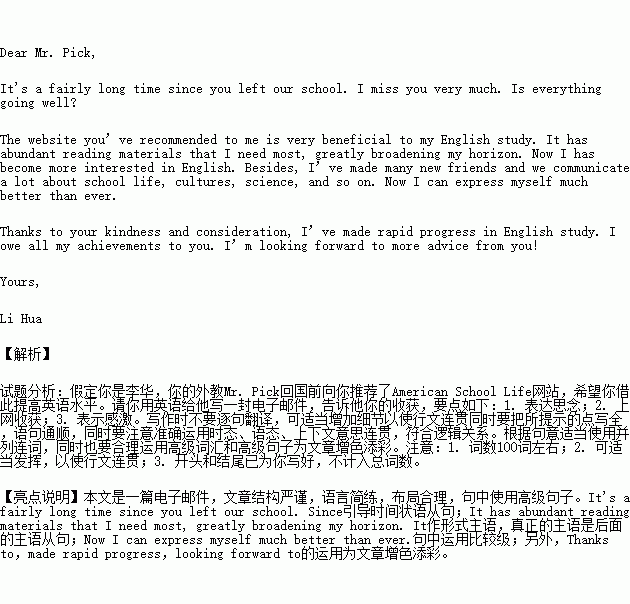题目内容
假定你是李华,你的外教Mr. Pick回国前向你推荐了American School Life网站,希望你借此提高英语水平。请你用英语给他写一封电子邮件,告诉他你的收获,要点如下:
1. 表达思念;
2. 上网收获;
3. 表示感激。
注意:1. 词数100词左右;
2. 可适当发挥,以使行文连贯;
3. 开头和结尾已为你写好,不计入总词数。
Dear Mr. Pick,
____________________________________________________________________________________________
____________________________________________________________________________________________
____________________________________________________________________________________________
____________________________________________________________________________________________
____________________________________________________________________________________________
____________________________________________
Yours,
Li Hua
练习册系列答案
相关题目

